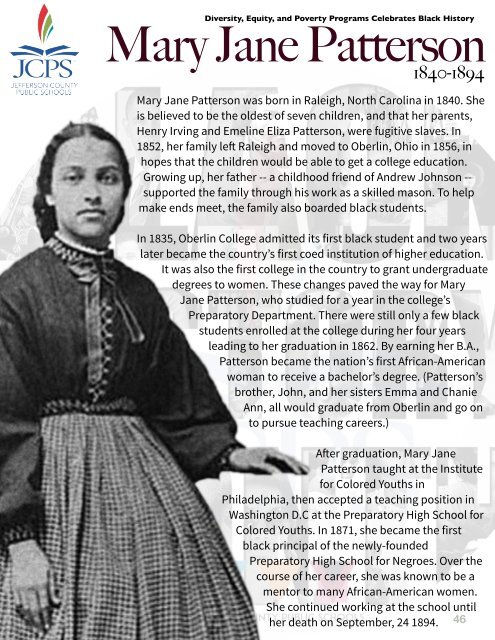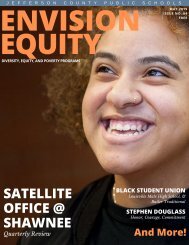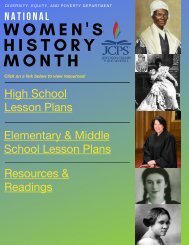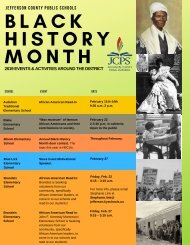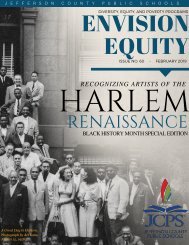2018 Black History Month Edition
Readers, Please enjoy the Black History Edition of our Envision Equity newsletter. This edition celebrates and recognizes black woman that have shaped and molded our world into a better place. As a reader, you will have access to photos from events that embody the purpose of this newsletter. We hope you enjoy, share, and contribute to the newsletter. Lastly, remember to Envision Equity.
Readers,
Please enjoy the Black History Edition of our Envision Equity newsletter. This edition celebrates and recognizes black woman that have shaped and molded our world into a better place.
As a reader, you will have access to photos from events that embody the purpose of this newsletter.
We hope you enjoy, share, and contribute to the newsletter. Lastly, remember to Envision Equity.
Create successful ePaper yourself
Turn your PDF publications into a flip-book with our unique Google optimized e-Paper software.
Diversity, Equity, and Poverty Programs Celebrates <strong>Black</strong> <strong>History</strong><br />
Mary Jane Patterson<br />
1840-1894<br />
Mary Jane Patterson was born in Raleigh, North Carolina in 1840. She<br />
is believed to be the oldest of seven children, and that her parents,<br />
Henry Irving and Emeline Eliza Patterson, were fugitive slaves. In<br />
1852, her family left Raleigh and moved to Oberlin, Ohio in 1856, in<br />
hopes that the children would be able to get a college education.<br />
Growing up, her father -- a childhood friend of Andrew Johnson --<br />
supported the family through his work as a skilled mason. To help<br />
make ends meet, the family also boarded black students.<br />
In 1835, Oberlin College admitted its first black student and two years<br />
later became the country’s first coed institution of higher education.<br />
It was also the first college in the country to grant undergraduate<br />
degrees to women. These changes paved the way for Mary<br />
Jane Patterson, who studied for a year in the college’s<br />
Preparatory Department. There were still only a few black<br />
students enrolled at the college during her four years<br />
leading to her graduation in 1862. By earning her B.A.,<br />
Patterson became the nation’s first African-American<br />
woman to receive a bachelor’s degree. (Patterson’s<br />
brother, John, and her sisters Emma and Chanie<br />
Ann, all would graduate from Oberlin and go on<br />
to pursue teaching careers.)<br />
After graduation, Mary Jane<br />
Patterson taught at the Institute<br />
for Colored Youths in<br />
Philadelphia, then accepted a teaching position in<br />
Washington D.C at the Preparatory High School for<br />
Colored Youths. In 1871, she became the first<br />
black principal of the newly-founded<br />
Preparatory High School for Negroes. Over the<br />
course of her career, she was known to be a<br />
mentor to many African-American women.<br />
She continued working at the school until<br />
her death on September, 24 1894. 46


